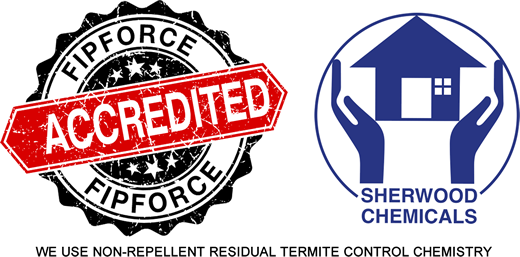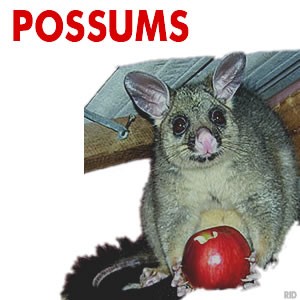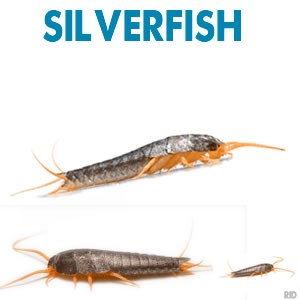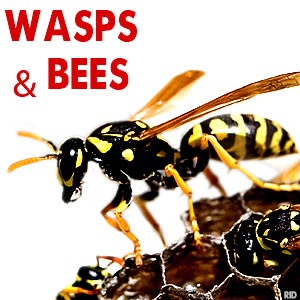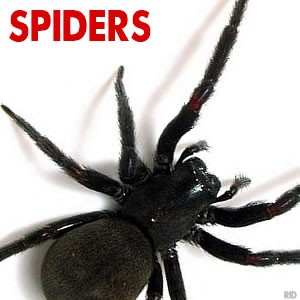Ballarat Termite Control & Treatment
Termites can cause significant destruction and devastation and it is incredibly important that any termite infestation is addressed by a qualified and experienced pest technician. RID Pest Control are termite specialists who can manage any termite infestation backed by our lifetime of experience dealing with active termite infestation and attack.
Termites attack homes, trees, gardens and basically any timber structure. No matter the species, no matter the affected timber we can eradicate and control any termite infestation.
RID offer a range of termite related services including; Termite Baiting, Termite Inspections & Termite Barriers.
If you think you have an active termite infestation please don’t delay and get in contact NOW. We treat active infestations seriously and will schedule a priority appointment to ensure we can stop them in their tracks as fast as possible because we know the devastation termites can cause in a relatively short time.
Upon contact we’re schedule an initial appointment and termite inspection for you. From there we can develop an understanding of your structure, the termite problem and will deliver a termite management plan and proposal with all our recommendations and costing.
If you want to know more about identifying termites and what you should do if you discover termites read this article at our blog.
Contact the RID today for a fast response and professional advice.
The Treatment Process
The first step we take is to conduct a comprehensive inspection of the structure under attack, we may commence initial treatment then and there before preparing a detailed termite management proposal.
Second Step – we assess the best practice approach to eliminating the infestation providing a written termite management proposal and we’ll commence the treatment process aiming for complete colony elimination.
Third Step – we monitor and continue treatment until termites have been eliminated, from there we will provide expert recommendations for preventative treatment and schedule a follow up inspection.
It’s at this stage we will typically progress with the termite management plan and it’s recommendations and move towards termite prevention (Stage 2) to ensure they don’t re-infest your home in the future.
RID Pest are equipped with the latest thermal imaging & termite radar technology (Termatrac T3i) allowing us to assess the damage and extent of the termite infestation with minimal invasive destruction required. We are also accredited with some of the leading Termite Control products available on the market.
RID Pest Control are FipForce, Termidor & TermidorHE accredited – we use and recommend the latest innovations in non-repellent termite control chemistry. Termidor’s $2 Million Dollar warranty applies to termite prevention works completed by RID Pest Control.
Termite Information
Subterranean termites are commonly referred to as “white ants” and although ants can also live underground and live in colonies, they share no other real similarities, we don’t call them white ants though you may. Did you know? Termites are more closely related to a cockroach than an ant!
In nature, termites have a very important role to play in recycling rotting timber in the forests, and returning nutrients back into the soil. It is only when they attack our homes that they are declared pests. The damage they are capable of causing can be immense!
Termites are social insects that live in colonies and have a caste structure that differentiates soldiers from reproductives and workers.
The reproductives, or alates as they are more commonly known, when sexually mature are fully winged, and in the warmer and more humid months can often be seen swarming in the late afternoon and early evening, flying out of the bush land in an attempt to colonise new areas. Occasionally that new area may be a dwelling or other man made structure. The queen lays a few eggs, and along with the king they raise and take care of the initial brood until they are capable of taking over. Once the nest is fully established, the queen does nothing else but produce eggs. She can lay up to 2000 eggs per day, and in some species the queen can live for forty years or more. These eggs develop into more workers and soldiers, and in around five years when the colony is thriving, more reproductives. Termites have the longest lifespan of any household pest and this is impressive for a prehistoric creatute.
Workers cause all the damage! They are wingless, blind and sterile, and are solely responsible for foraging for food, constructing tunnels, building the nest and nursery and feeding the colony. They feed on timber and other cellulose based materials. They have strong preferences for some timbers over others. They particularly enjoy exotic timbers such as Oregon and Radiata Pine, although they will just as happily devour hardwood. Their gut contains protozoa or bacteria that assists in converting cellulose into sugars that are more readily digested. As they feed, they hollow out the timber and move from one area to another through small galleries and mud like tunnels made from saliva, faecal material and mud. These mud-like tunnels are known as ‘leads’ or ‘shelter tubes’.
The tunnels are created to protect themselves from predators, heat and light and the outside environment. Colony temperatures are high, somewhere around the 37 deg C area and humidity is almost 100%. In fact the high humidity enables the termites to cultivate fungi, which is harvested as an additional food source.
Soldiers are responsible for protection of the nest and in some species have a pair of highly developed mandibles or pincers designed purely to attack predators such as ants. The highly refined mandibles prevent the soldiers feeding themselves, and they rely solely on the worker to regurgitate food and feed them.
Termites will travel long distances to find food. Their nest may be 50 to 100 meters (more reliably less than 50m) away from where the workers are foraging. They are attracted to carbon dioxide that is given off by decaying timber.
They can find their way into a structure by creating ‘leads’ up the foundations of timber-floored suspended homes.
Concrete slab homes are no safer as they are capable of traveling through concrete cracks no larger than 1-1.5 mm wide or up the slab edge or beside a service penetration (pipes etc).
The damage caused by termites to houses and buildings is well known and researched. According to CSIRO research, 1 in 3 homes in mainland Australia will encounter termite activity and damage in it’s life. In fact, termites cause around $1 billion dollars worth of damage each year to properties in Australia.
The first stage of any pest management strategy is a thorough inspection. An experienced technician should carry this out. The inspection will determine the extent of the infestation, if the termites are currently active, identification of termite species or genus. The inspection will further determine where the termites are entering the building and what steps will be required to eradicate the termites that are present, and a strategy to protect the building from future attack.
Eradication of any existing termite infestation is vital in preventing the damage from spreading. Initially, this is usually done by introducing a toxicant bait to their workings in what we call above ground bait stations. The termites then feed on the bait over a variable period of time (sometimes months) and share it around the colony like most social insects do, unknown to the termites the bait is preventing their ability to moult and shed their exoskeleton, this in turn (in simple terms) causes the death of the colony including the queen or queens and is the ultimate way to eradicate a colony attacking your home.
There are other treatment methods available to deal with active infestation but they are not nearly as reliable as baiting as a means of colony control. Other methods that can be used include, dusting and foaming termite workings and activity. This isn’t often used by us because it does not afford complete colony control which in our opinion should be the primary objective of Stage 1 reactive treatment.
It is extremely irresponsible to ignore an active termite infestation. It matters not if the infestation is in the home, shed or fence. The termites must be destroyed to prevent foragers locating and entering neighbouring assets.
If the technician can locate the nest, an insecticide can be applied to directly destroy the nest. Once the nest has been destroyed, the infestation should very quickly die out, however the home is not protected against re-infestation, especially if other nests are located nearby.
Since 1995, it has become compulsory in some council areas to provide termite protection to all new domestic buildings. There is a host of both chemical and non-chemical options available, including perimeter blanket systems, non-repellent termiticides, reticulation systems installed either under the slab or as a perimeter protection. Physical systems such as graded stone; stainless steel mesh and aluminum strip shielding are also widely used. Newer options are frequently being developed, and without question, Australia leads the world in this technology.
A popular choice made by builders is to utilise the concrete slab (poured in accordance with AS2870) as part of a termite management system. This is offered simply because it is cheap but is not enough to meet the minimum termite management requirements under AS3660.1 or the Building Code of Australia. RID Pest can offer systems to builders that compliment such slabs to include two visits sometimes called Part A and Part B visits during construction – Part A being protection of service penetrations – applied prior to slab pour and then Part B applied to the slab perimeter after pouring and before framing commences.
As a preventative measure we routinely recommend both physical and chemical termtie management systems, reticulation systems, or a combination of these and can assist is ensuring your home is protected from concealed termite entry for the economic life of the structure. Contact us today to discuss your Pre Construction Termite Management requirements.
